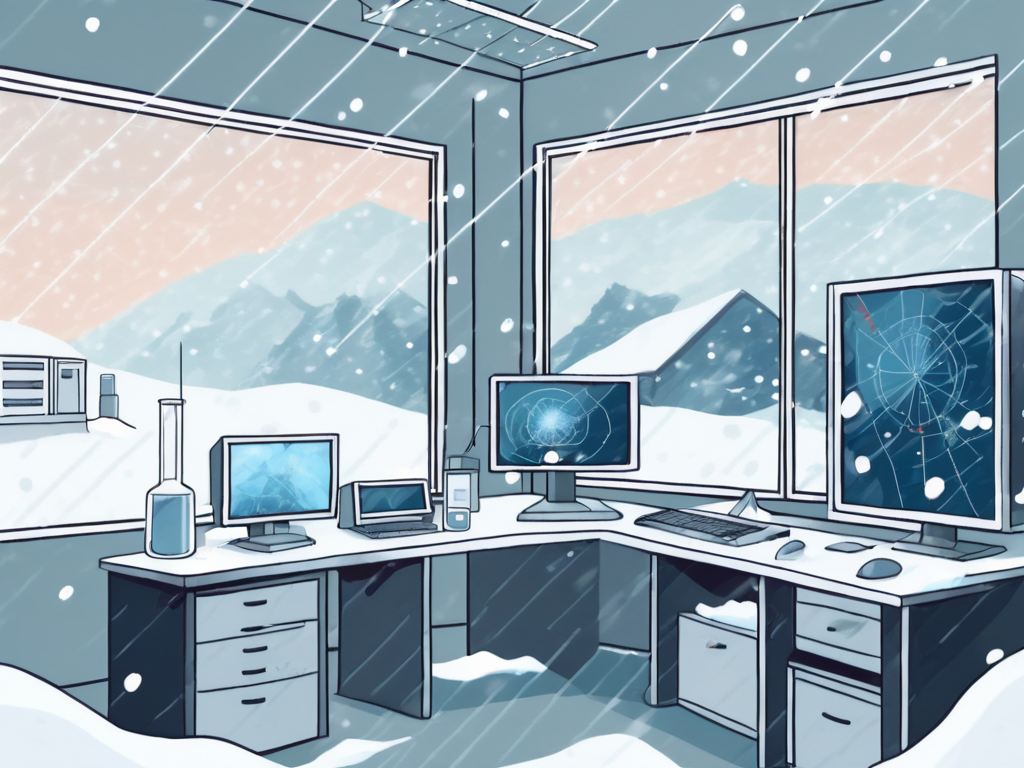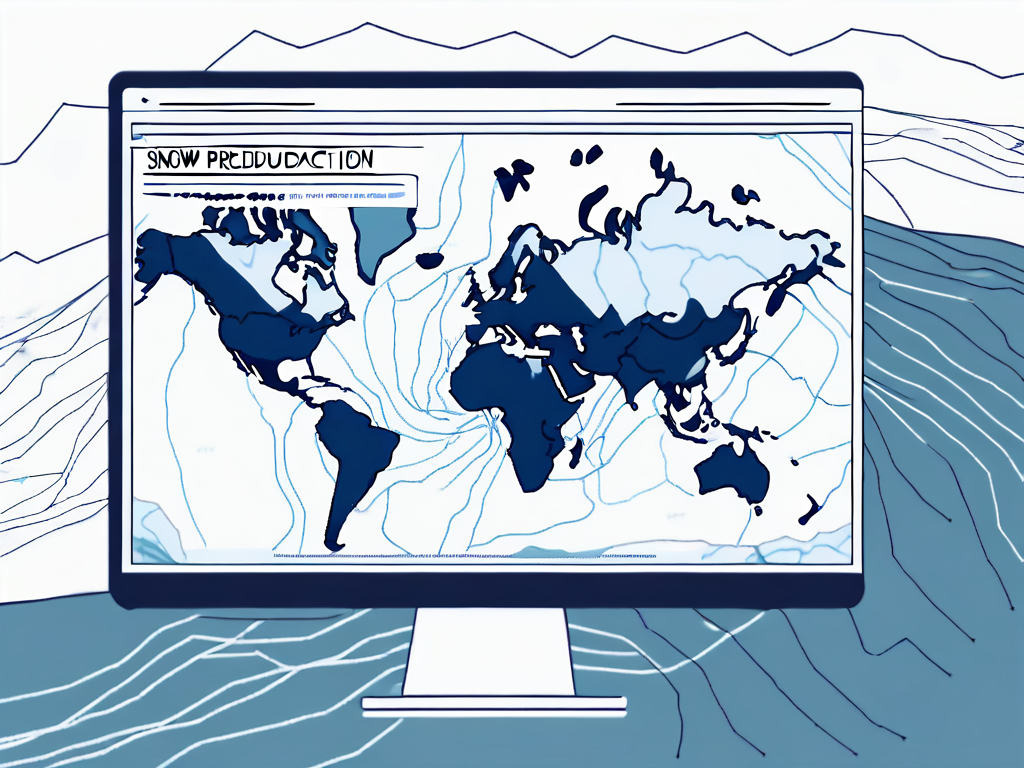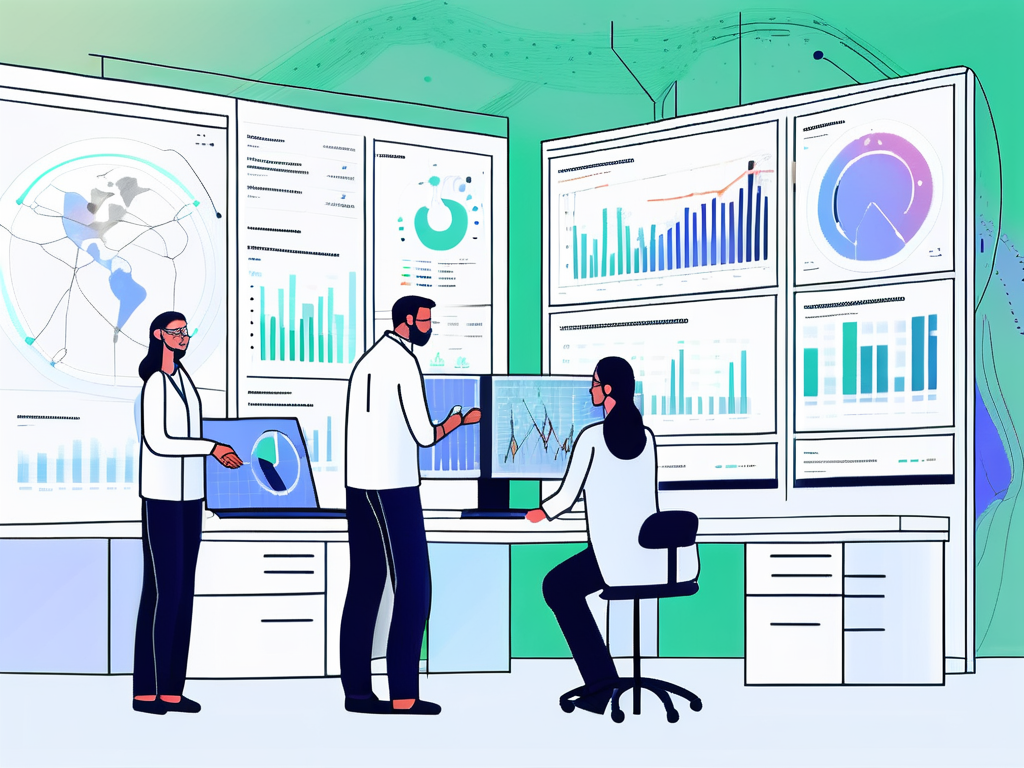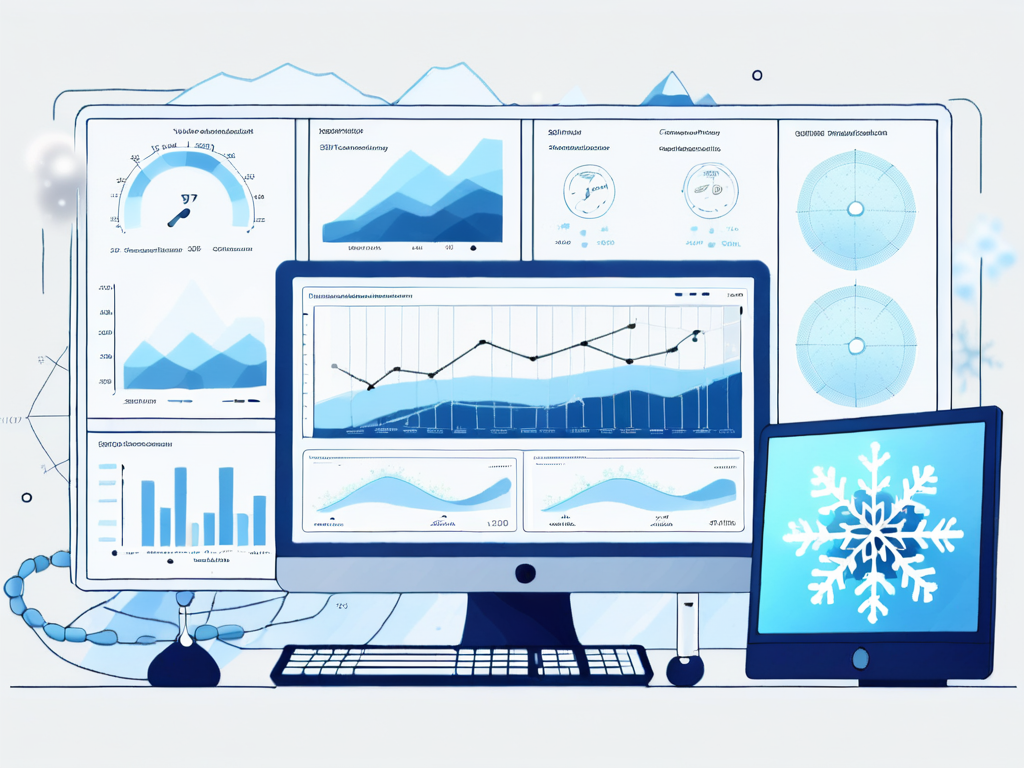
Collaborating with snow predictor agencies for research and development can be a valuable opportunity for scientists, businesses, and industries that are affected by snowfall. By understanding the role of these agencies and the science behind snow prediction, initiating collaboration, building a strong research partnership, and leveraging snow prediction data, organizations can gain valuable insights and make informed decisions. However, like any collaboration, there are challenges to overcome, such as communication barriers and data privacy concerns. In this article, we will explore each aspect of collaborating with snow predictor agencies, providing insights and guidance to help you establish successful partnerships for research and development.
Understanding the Role of Snow Predictor Agencies
Snow predictor agencies play a crucial role in monitoring and predicting snowfall patterns. They use advanced technologies, weather models, and historical data to provide accurate predictions and forecasts. These predictions are essential for numerous industries, including transportation, agriculture, energy, and tourism. By understanding how snow predictor agencies operate and the science behind their predictions, organizations can better collaborate and utilize their expertise.

The Science Behind Snow Prediction
The science behind snow prediction is complex and involves analyzing various factors that contribute to snowfall, such as temperature, humidity, air pressure, and atmospheric conditions. Snow predictor agencies use this information, along with computer modeling techniques, to forecast snowfall patterns over specific timeframes. By understanding the scientific principles behind these predictions, businesses can make informed decisions and mitigate potential risks.
One of the key factors that snow predictor agencies consider is temperature. When the temperature drops below freezing point, precipitation can turn into snow instead of rain. However, the exact temperature at which this transition occurs can vary depending on other atmospheric conditions. By analyzing temperature trends and patterns, Snow Day Predictor Canada App can determine the likelihood of snowfall in a particular region.
The Impact of Snow Predictions on Various Industries
The impact of snow predictions on different industries is significant. For example, transportation companies need accurate snow predictions to plan routes, allocate resources, and ensure the safety of their operations. Snow-covered roads can be hazardous, and knowing when and where snow is expected can help these companies take necessary precautions and minimize disruptions.
Agricultural businesses also rely on snowfall data to manage irrigation systems and plan crop planting schedules. Snow acts as an important water source for many regions, especially during the spring thaw. By understanding snowfall patterns, farmers can optimize their irrigation schedules and ensure that their crops receive adequate water supply.
Similarly, energy companies monitor snow predictions to anticipate potential disruptions to power supply caused by snowstorms. Heavy snowfall can lead to power outages due to fallen trees or damaged power lines. By staying informed about snowfall forecasts, energy companies can prepare for such scenarios and minimize the impact on their customers.
By recognizing the impact of snow predictions on specific industries, researchers can tailor their collaborations and address industry-specific challenges. This collaboration between snow predictor agencies and industries is crucial for effective planning and risk management, ensuring the smooth functioning of various sectors even in the face of unpredictable weather conditions.
Initiating Collaboration with Snow Predictor Agencies
Initiating collaboration with snow predictor agencies requires aligning research goals and finding the right agency to partner with. This process involves careful consideration and strategic planning to ensure a successful and mutually beneficial partnership.
Collaborating with snow predictor agencies can provide valuable insights and enhance the accuracy of snow prediction models. By leveraging the expertise and data resources of these agencies, researchers can improve the effectiveness of their research and contribute to advancements in snow prediction technology.
Identifying the Right Agency for Collaboration
Identifying the right snow predictor agency for collaboration is crucial. Look for agencies with a proven track record, experience in your industry, and a strong reputation for accuracy. Evaluate their resources, expertise, and access to data. Consider meeting with agency representatives to discuss your research goals and assess the compatibility of your objectives.
Furthermore, consider the geographical scope of the agency's predictions and how well they align with your research needs. A comprehensive understanding of the agency's methodologies and predictive models is essential to ensure a harmonious collaboration that yields meaningful results.
Approaching Snow Predictor Agencies for Collaboration
When approaching snow predictor agencies for collaboration, it is essential to articulate your research objectives and the potential mutual benefits. Present a clear proposal outlining the goals, scope, and expected outcomes of the collaboration. Highlight how your research complements the agency's work and propose ways to leverage their data and expertise effectively. Demonstrate your commitment to the partnership and willingness to contribute valuable insights to advance snow prediction methods.
Emphasize the importance of open communication and collaboration throughout the partnership. Establishing clear channels for sharing information, discussing findings, and addressing challenges is key to fostering a productive and successful relationship with the snow predictor agency. By maintaining transparency and fostering a spirit of cooperation, both parties can maximize the impact of their collaborative efforts and drive innovation in snow prediction technologies.
Building a Strong Research Partnership
Building a strong research partnership with snow predictor agencies involves aligning research goals and nurturing the collaboration for long-term success.

Establishing a strong research partnership with snow predictor agencies goes beyond just setting common goals; it requires a deep understanding of the agency's operational challenges, technological capabilities, and strategic priorities. By conducting thorough research on the agency's history, current projects, and future aspirations, you can tailor your research goals to complement and enhance their existing efforts. This proactive approach demonstrates your commitment to the partnership and increases the likelihood of creating impactful outcomes that benefit both parties.
Aligning Research Goals with Snow Predictor Agencies
To build a productive research partnership, align your research goals with the objectives of the snow predictor agency. Identify common areas of interest and potential research projects that can benefit both parties. Collaboratively establish research milestones and develop a shared understanding of expectations, timelines, and deliverables. Regularly communicate and reassess the alignment of objectives to ensure the partnership remains focused and fruitful.
Moreover, consider conducting joint brainstorming sessions or workshops with key stakeholders from both sides to explore innovative research ideas and identify synergies that can drive the partnership forward. By fostering a creative and collaborative environment, you can inspire out-of-the-box thinking and uncover new opportunities for research collaboration that may not have been apparent initially.
Nurturing the Partnership for Long-Term Collaboration
Nurturing the research partnership requires ongoing communication, trust-building, and mutual support. Engage in regular meetings, workshops, and knowledge-sharing sessions to foster collaboration and exchange ideas. Establish mechanisms to resolve conflicts or disagreements that may arise during the research process. Recognize and acknowledge the contributions of all parties involved, fostering a sense of ownership and shared success. By investing in building a strong research partnership, you can maximize the benefits of collaborating with snow predictor agencies.
Furthermore, consider exploring joint funding opportunities, co-authoring research publications, or co-presenting findings at conferences to enhance the visibility and impact of your collaborative efforts. By showcasing the collective expertise and achievements resulting from the partnership, you can attract additional resources, expertise, and partnerships that further strengthen the research collaboration with snow predictor agencies.
Leveraging Snow Prediction Data for Research and Development
Leveraging snow prediction data effectively is crucial for meaningful research and development.

Interpreting Snow Prediction Data
Interpreting snow prediction data requires a deep understanding of data analysis techniques and statistical models. Collaborate closely with the snow predictor agency to gain insights into their data collection methods, validation processes, and limitations. Ensure you have access to historical data, real-time updates, and any relevant metadata to make accurate interpretations. Consider involving data scientists or experts in your research team to harness the full potential of snow prediction data.
Integrating Snow Prediction Data into Research
Integrating snow prediction data into research requires thoughtful planning and analysis. Consider combining snow prediction data with other datasets and variables to uncover hidden patterns and correlations. Develop customized algorithms or models that can leverage the unique aspects of snow prediction data. Engage in iterative cycles of analysis and validation to refine your research methods and enhance the accuracy of your findings.
Overcoming Challenges in Collaboration
Collaborating with snow predictor agencies may present certain challenges, which can be addressed with proactive measures.
Addressing Communication Barriers
Open and transparent communication is vital for successful collaboration. Foster a culture of active listening, respect, and clarity in all communications. Establish regular communication channels and platforms to enable efficient information exchange. Develop a shared glossary of terms and definitions to ensure mutual understanding. Regularly assess and address any communication barriers that may arise, demonstrating flexibility and adaptability.
Managing Data Privacy and Security Concerns
Collaborating with snow predictor agencies involves handling sensitive data. Ensure compliance with data privacy regulations and ethical guidelines. Establish robust data sharing agreements and protocols to protect the confidentiality and integrity of data. Implement secure data storage and transfer mechanisms, considering encryption, access controls, and audit trails. Regularly review and update data security measures to address emerging threats and vulnerabilities.
Conclusion
Collaborating with snow predictor agencies for research and development can be highly beneficial for a wide range of industries. By understanding the role of these agencies, initiating collaboration, building strong partnerships, and leveraging snow prediction data, organizations can gain valuable insights and make informed decisions. While challenges may arise, proactive measures in addressing communication barriers and managing data privacy and security concerns can help overcome these obstacles. With careful planning, active collaboration, and continuous learning, organizations can foster successful collaborations with snow predictor agencies, contributing to advancements in snow prediction and benefiting from the research opportunities that arise.





